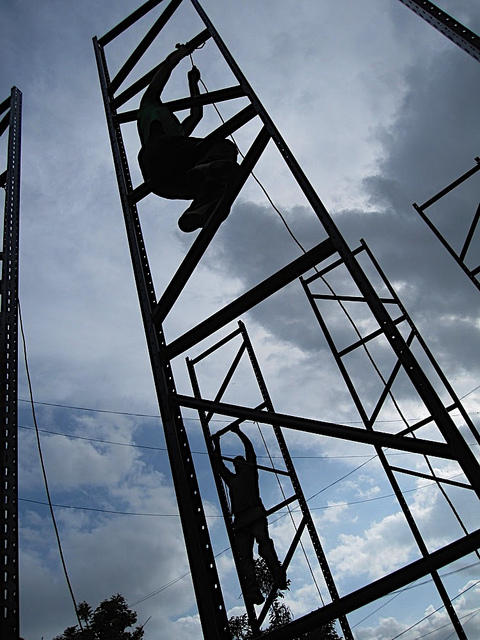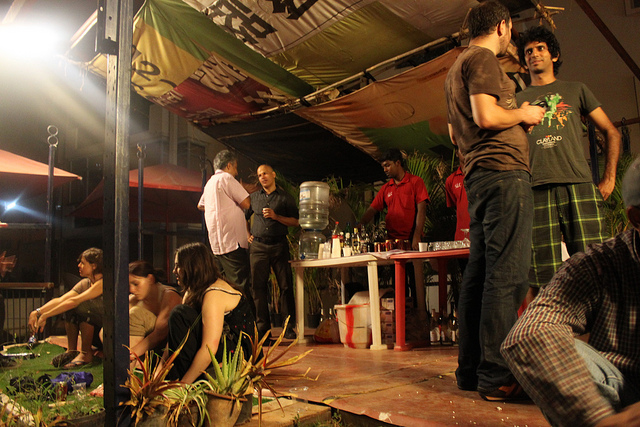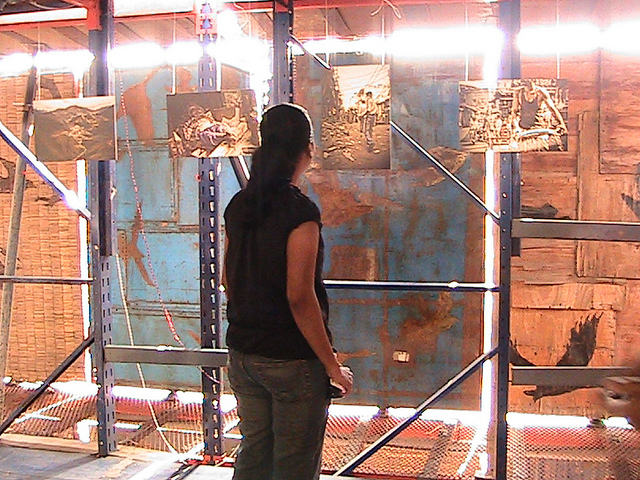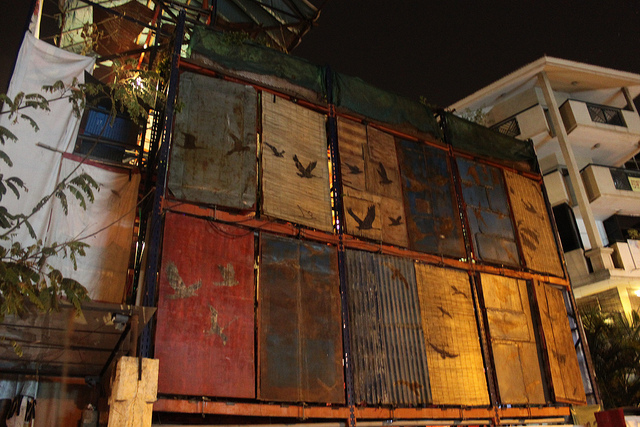When I arrived at Jaaga four weeks ago to begin my residency, the first thing I found out was that Jaaga - the building - was to move in June.

The owner of the land, Naresh, an architect and ultimately a businessman, had decided to develop what is a prime central Bangalore location. There was not (and still is not) a definite destination for the structure.
This single fact has been of sweeping importance to the direction of the Jaaga experiment as a whole, and to that of the now-termed final show in Richmond Town.
Light and Sound
The perspective was starkly different late last year. I agreed to come and work on the Light and Sound project understanding that the goal was to make a permanent change to the nature of the space. There was a knowledge that the land was borrowed, but Jaaga grew cultural roots, and there was a false sense of security.
Jaaga's self-definition sprouted organically in this period - nothing seemed mutually contradictive. It could be an art space, either in the academic or the Burning Man sense. It could be a business startup and co-working environment. It could be a place for poets, photographers, musicians, programmers, hackers - it could host community events, informal groups or big business conferences showcasing their 'cool urban' credentials. Jaaga was, in other words, whatever you wanted it to be when you walked in through the gate.
Now, Jaaga could end up back in a central location, where all of these things would remain a realistic and vibrant possibility. But this is very difficult - everyone knows that any space in the city center is a tough find in one of India's fastest-growing cities. So the conversation about where Jaaga moves to necessarily implies a conversation about what Jaaga is, since any move from it's current location will mean a change in audience.
The 'Final Show' - A Statement
When the fact of the move sank in, it took a week or two to absorb the consequences. At first, there was a naïve sense that the all the move presented was a test to the idea of Jaaga's reconfigurability - that the installation work produced should be easy to disassemble and reassemble in the new location.

But in truth there wasn't time for this. Jaaga is a place that grows step by step and slice by slice. The nature of the building means that it's hard for the first version of something to be the last version of something. Jaaga is an experiment in constant flux. Whether it's providing electricity for an event or waterproofing the ceiling, there is always a stream of innovative new solutions being implemented. It would take time for permanent installations to mature before they could be assured survival in a changed environment. And ofcourse, there is no guarantee of what shape, size or kind of space the future Jaaga would occupy, and therefore what role permanent installations might play.
So as the term final show emerged, the Light and Sound project lost it's sense of permanence. The project had now become something very different. It had become an opportunity to make a statement. This statement would not be something organically bound to the building's frame (à la Eve Sibley's vertical garden), but rather would be something which would come, go, and live on only in memory.
Philosophical Openness
But what kind of statement should be made? Every day spent in the building is an opportunity to see in action the flux of life at Jaaga. And of the various people preparing work for the final show, each is somehow indicative of a strand of thought in a very multistranded space.

The co-founders and Directors, Freeman Murray and Archana Prasad, have created and developed a view of themselves which seems designed to incorporate all of these various views under one overarching theory. They call it The Enlightened Singularity.
And there is ofcourse also the concept of the Living Building. Again, this is a very open concept - after all, as McLuhan points out in his "medium is the message" quote, any [media / medium / technology] can be conceived of as an extension of some part of the human body.
Resident artist Tobias Rosenberger has talked about Jaaga's "philosophical openness". Jaaga is a very accepting place, and so it prefers philosophies which allow it to continually add - people, ideas, materials, concepts - into the whole, from any directions which seem to benefit. However, what is now becoming clear is that openness in all directions is one of the luxuries of remaining in a state of constant flux. So to continue in this vein means remaining in a state of flux - permanently.

Is this really possible? Will Jaaga be able to maintain it's openness and still remain a vibrant cultural space in Bangalore? If the time comes to choose a clear direction, will openness stop being a virtue and start to become a handicap? Will Jaaga be forced to stop becoming and finally become? And what would it become if it did?
A Microcosm
The fact that these questions remain unanswered is of pivotal importance to Jaaga's final show. Within the group there are diverse interests and seemingly different directions. Ultimately the answer to the question of what kind of statement should be made resides with each individual artist, their relationship to each other their relationship to the space. In a way the Light and Sound project is a kind of microcosm for Jaaga's macrocosm. We don't have answers - the result will probably only be clear after the event. But that is one of the things that make it a very interesting project to be a part of.